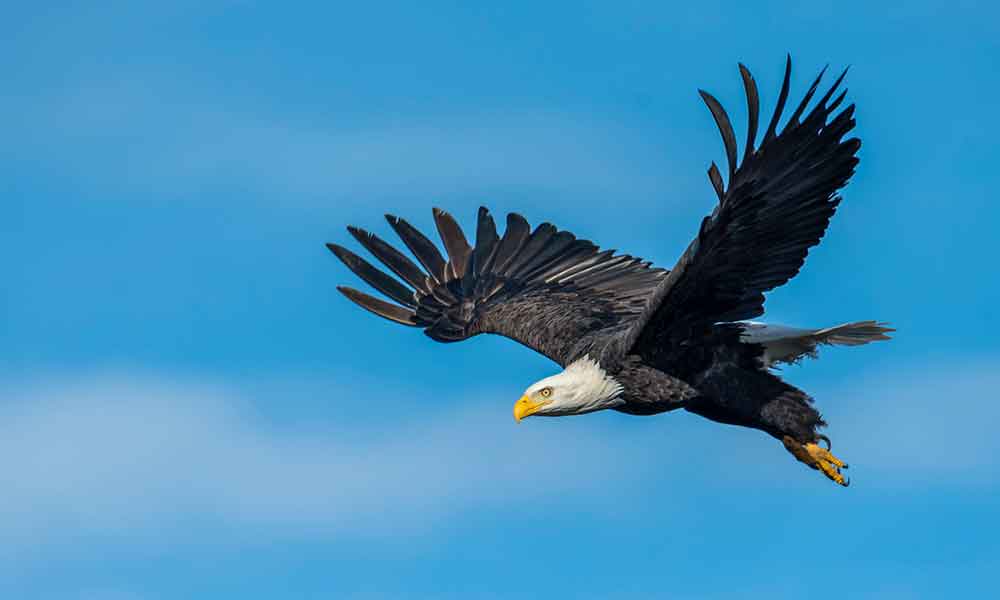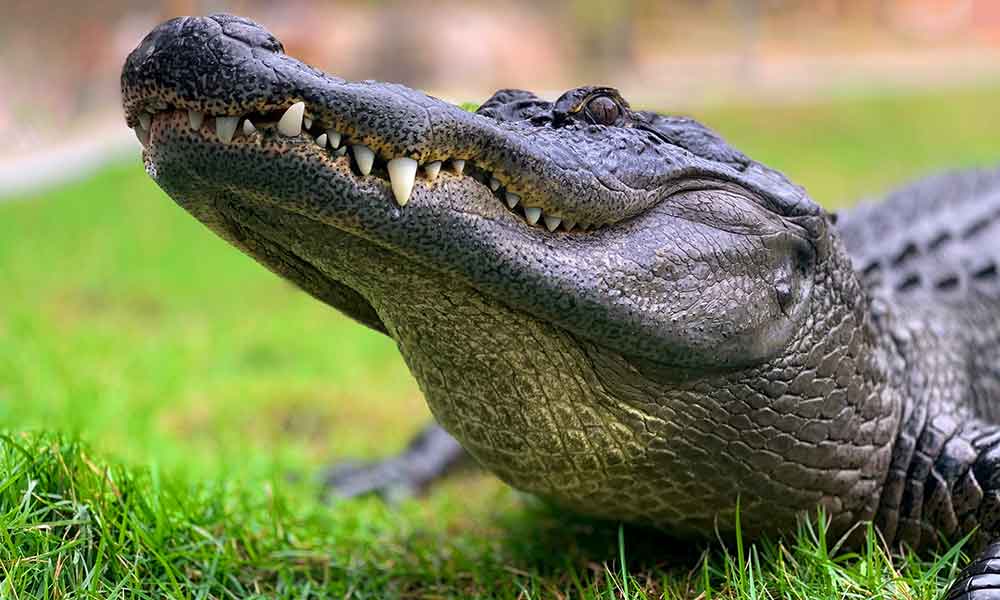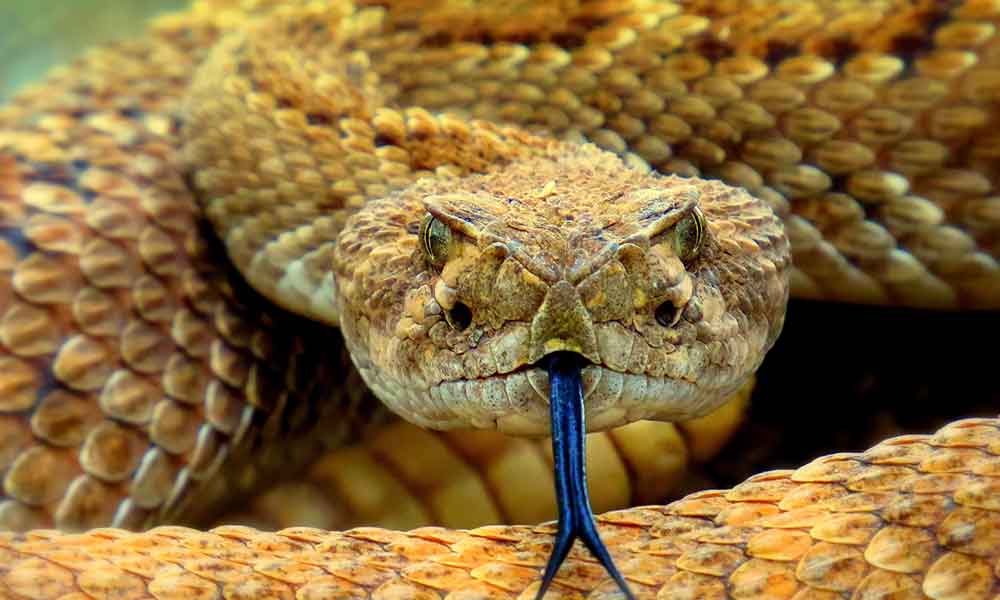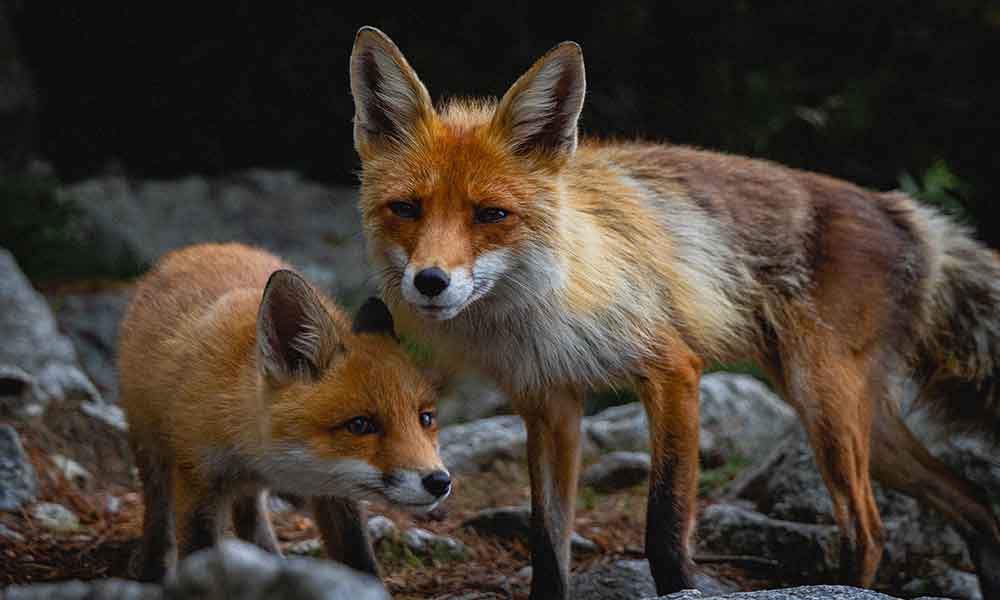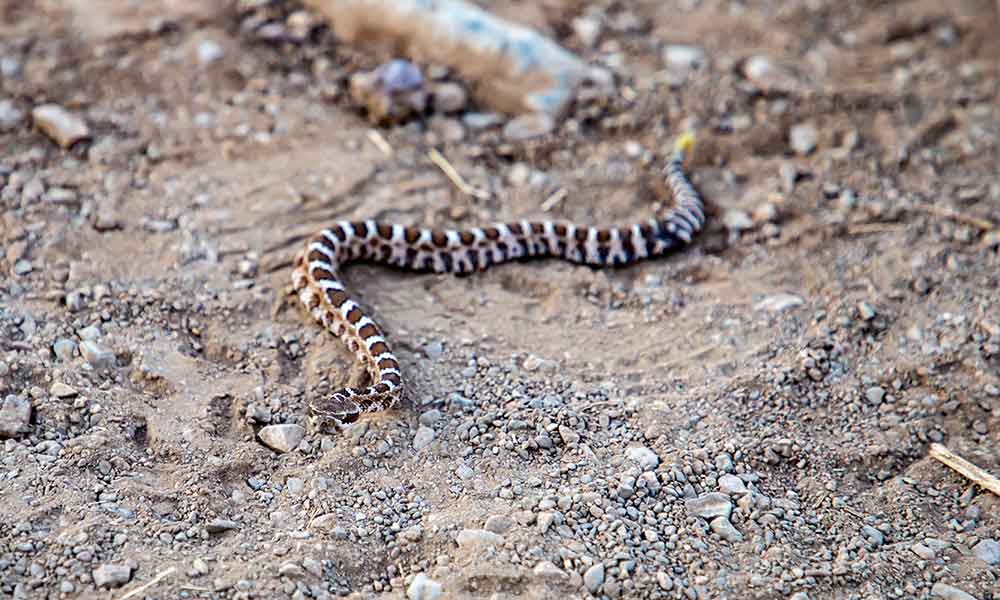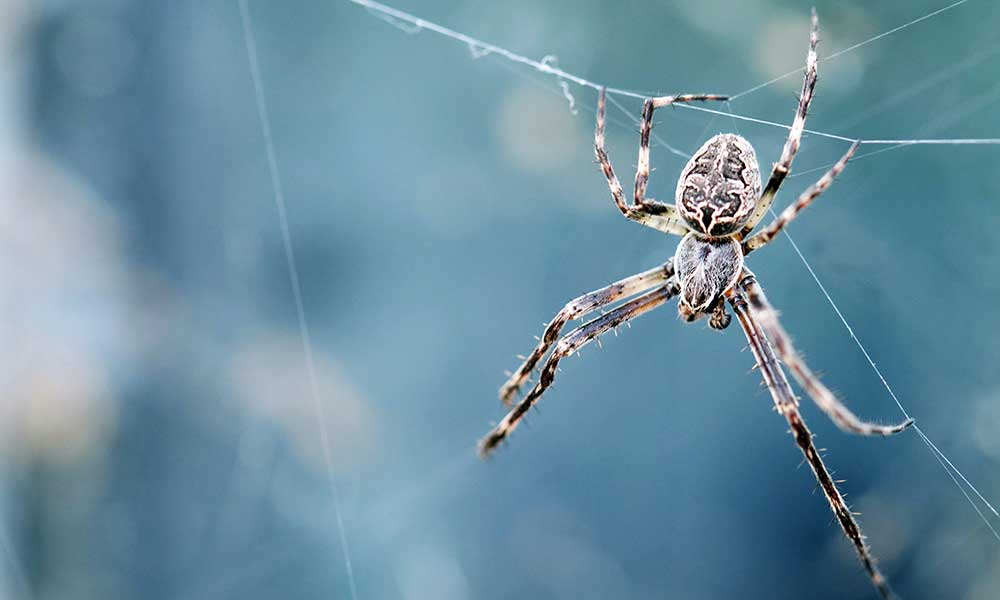Eagles are majestic, awe-inspiring creatures. These powerful birds of prey have been closely associated with the United States for several hundred years, but there’s a lot about eagles that the average American doesn’t know, including how they hunt, survive, and reproduce, as well as why they have come to symbolize an entire nation.
How Many Types of Eagles are There in North America?
Eagles are commonly found in Europe and Africa, with just 2 species found in North America: the bald eagle and the golden eagle.
The Bald Eagle (Haliaeetus leucocephalus)
The bald eagle is a sea eagle found throughout the United States, where it has been the national bird since 1782.
The name “bald eagle” is a little confusing as these birds clearly have hairs on their heads, but it doesn’t mean what you think it does.
The word “bald”, in this context, comes from the Old English “piebald”, which translated roughly as “white patch”. When used to reference someone or something without hair, the word “bald” has a very similar etymology but may also be related to the word “ballede”, which speaks about the desire to have hair in a place it doesn’t grow.
Bald eagles nearly went extinct in the 20th century, but their population has since recovered and they are now listed as “Least Concern”, indicating that there is currently very little extinction threat.
You can often find bald eagles around rivers, lakes, and coastlines. They feed primarily on fish, including trout and salmon, but they are opportunistic and also scavenge meat from other kills, including those of foxes, wolves, and bears.
Bald eagles perch and nest in hardwood trees. They grow up to 15 pounds, with wingspans of up to 8 feet, and the largest ones can be found in Alaska.
Why is the Bald Eagle the National Bird?
The bald eagle has been the national bird of the United States for nearly a quarter of a millennium and has come to symbolize the freedom, size, and courage of this great nation.
The reasoning behind this is a little simpler, though. The founders of the US simply liked the aesthetic of the bald eagle and also wanted to replicate the Roman Republic, which frequently used eagles.
Why Did Bald Eagles Nearly Become Extinct?
Bald eagle population numbers plummeted during the middle of the 20th century. There were many reasons behind this decline, but the biggest was the use of DDT, a popular insecticide.
DDT wasn’t directly harmful to bald eagles, but it affected their eggs and made many of them sterile. In one fell swoop, it prevented entire generations of bald eagles from being born, and this sent the bird into near-extinction.
Interesting Facts About Bald Eagles
- Despite being great hunters, bald eagles rely heavily on scavenged food. They will steal food from other animals and even eat from the trash.
- The sound that a bald eagle makes is often dubbed when it appears on film, as the real sound is considered to be much weaker and whinier than the fake one.
- Bald eagles live surprisingly long lives, with the record being 38 years.
Golden Eagle (Aquila chrysaetos)
The golden eagle is the most widely distributed eagle species and can be found throughout the Northern Hemisphere.
Golden eagles feed on rabbits, squirrels, hares, and other small creatures. They build their nests in cliffs and have a wingspan of around 5 feet, with an average weight of 6 pounds.
There are half a dozen subspecies of golden eagles and the one you will find in the US is the North American golden eagle.
Golden eagles have dark brown plumage, but they also have golden features on their necks and this is where the name “golden eagle” comes from.
Interesting Facts About Golden Eagles
- These creatures can fly for hundreds of miles in search of food.
- They often work in pairs while hunting.
- Golden eagles have been known to hunt small deer and other large animals.
- They can go several days without food.
- Female golden eagles lay between 1 and 4 eggs that they incubate for between 40 and 45 days.
- The golden eagle played a key role in both Greek and Roman mythology.
Other Eagles in the United States
The golden eagle and bald eagle are the two species most commonly found in North America, but there are a couple of others that can technically be added to this list.
The Steller’s sea eagle is one such creature. These birds are the heaviest of all sea eagles, weighing over 21 pounds. They have a similar appetite Nto the bald eagle and are very rarely found in the US. However, there can be a few lost birds living near the state of Alaska.
The White-tailed eagle is another species you may find off the coast of Alaska, but it mainly lives in Asia and Europe. As with the Steller’s sea eagle and the bald eagle, the white-tailed eagle is a sea eagle.
What is the Largest Eagle in North America?
The bald eagle is bigger than the golden eagle on average. However, the latter has the largest range and will venture far from home to find food.
What is the Most Common Eagle in North America?
It has been estimated that there are over 300,000 bald eagles in the United States. Considering these birds were nearly extinct half a century ago, that’s an impressive stat.
As for golden eagles, the numbers are around 1/10th of that. It’s still enough to sustain the population, but it doesn’t come close to the bald eagle, which is the most common in the US.
Where Does the Word “Eagle” Come From?
The word “eagle” comes from the Latin “Aquila”, which then became “aigle” in French before passing into English.
“Aquila” is the feminine of “aquilus”, an adjective that references something of a dark color (like the eagle’s dark plumage).
Young Bald Eagle vs Golden Eagle
The bald eagle and golden eagle are very different creatures and, as a result, they are easy to tell apart. They have some similarities, but the bald eagle has a distinctive white head and yellow beak.
However, juvenile bald eagles don’t have that distinctive patch and so they can look very similar to a golden eagle, especially when the bird is in flight several hundred feet in the air.
The easiest way to tell them apart is to look at the legs. Golden eagles have feathers covering all of their legs but in young bald eagles, the feathers cover just half of their legs.

